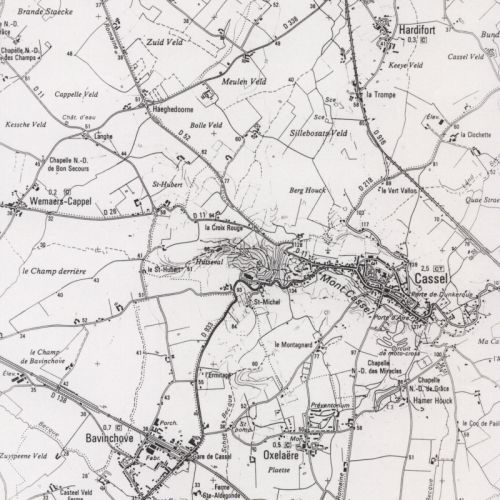|
|
Earliest Traces
|
A feudality called 's
Heerens Bosschaerts or Sillebosats in France
At a
research in the ancient archives at Lille in France, concerning certificates
about the fortress of Cassel, we have found an interesting item.
After
a laborious research in the ancient archive in France, Tom has found some manuscripts
which indicate the concerning area. It is defined as "sHerBossaerts",
and concerns a "denombrement of leene". It dates from 1507: Jan van
Belle (Jean de Bailleul), stadtholder, was appointed by archduke Charles of
Austria (Karel V, born in 1500) to enlist all the feodalities and sub-feodalites. In 1328 the battle of Cassel took
place, between count Louis de Crécy (acting for the king) and the rebellious
Flemish cities Mardick (a strong Norvegian harbour close to Duinkerken), Gravelines,
Cassel and other Flemish cities. Louis de Crécy wins, and as a victor
he thinks he has the right to assassinate a lot of the inhabitants of Cassel
and to banish many others. Also he does dedicates an irrisponsible financial
charge to pay-back by the defeated. (In the very long list of all the killed
people of these battle, nobody was found with our family name.) I suppose that
the Bossaerts have swerved to the safer north (or were banished). This is only
a theory. The tale sounds credible. More crediblely than other possibilities.
Several ancients certificates are found: they do not indicate a feudality, but they mention the borders of the adjacent ground. One is called sHerBossaerts. A feudality of sHerBossaerts has not been found so far. The area is relatively small and is probable a sub-feodality. It is not necessary that this sub-feodality belonged to Jan van Belle; any man in power might have the rights of this concerning piece of country. In the neigbourhood was once a castle, what can be derived from the name Coie. Today the remains or ruins of this caste are not found. The place Coyecques exists. This hamlet is found at south west of St. Omer in the northern department of Pas-de-Calais in France. On another map this place is called as Keeye-Veld; or "Koie, ou la Coie, seigneurie où il y avait un château". It is a small step from Coie to Coyecques: it is the area of the occupants of Coie (suffix - iacus).
|
This site powered by The Next Generation of Genealogy Sitebuilding v. 14.0, written by Darrin Lythgoe © 2001-2025. Maintained by Rudi Bosschaerts. Hosted at One.com © 2019 Rudi Bosschaerts, Belgium. |






